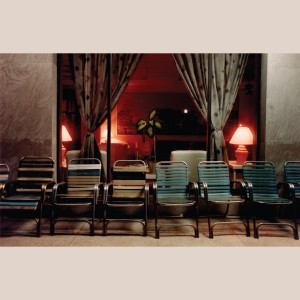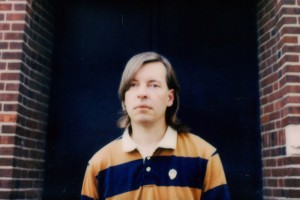
Artist
IMAGES: To download, click above. Photo credit to Carrigan Drallos
LINKS:
Polyvinyl
Press Room
Facebook
Twitter
Instagram
YouTube
Bandcamp
Fred Thomas
Polyvinyl
The past becomes part of the future on Window in the Rhythm, a career-defining double album statement from singer, songwriter, and producer Fred Thomas. Since the mid-’90s, Thomas has centered his life around his art, playing in countless projects, recording bands, touring consistently, and remaining immersed in music in a fully self-directed style. You’d be just as likely to see him fronting a reverby twee punk band as sitting in with a free jazz trio, but Thomas’ creative voice always comes through at its clearest on his solo material. With an acclaimed trilogy of solo albums released with Polyvinyl (2015’s All Are Saved, 2017’s Changer, and 2018’s Aftering), Thomas aimed to compress his disparate musical leanings and the rawest of his feelings into one interlocking whole. Six years after completing that beautifully scattered sonic scrapbook, Window in the Rhythm overhauls Thomas’ self-inspectionary sound-world with an approach unlike anything he’s attempted before.
Exactly one hour of music is split up into just seven songs. Having gotten the two-minute pop songs out of his system with his band Idle Ray, Thomas opens up into spacious environments with patient, steady tempos and carefully mapped arrangements. Lonely nylon-string guitars and field recordings transition into enormous, rippling waves of slowcore distortion and buried electronic textures. The mixtape scatter that found the trilogy jumping from guitar blasters to synth instrumentals is streamlined here into a cohesive flow. Drummer/composer Quin Kirchner’s controlled playing guides the rhythms, friends like Raw Honey’s Maggie Hopp, Michigan multi-instrumentalist Mary Fraser, and Australian songwriter Elena Dakota all contribute guest vocals, and not one but two harpists show up; Mary Lattimore weaving ambient softness on one track and Shelley Burgon’s unrelenting double harmonics driving the intensity of another. The album takes its time unpacking itself, with purposeful atmospherics and song construction evoking the same tense brilliance found on Portishead’s Third, Bjork’s Vespertine, or key moments from the Microphones’ early output, and Thomas going deep into his own emotional topography in the same way as Joanna Newsom’s masterful epic Ys. Co-production from long-time collaborator Drew Vandenberg also zeroes in on the details, making for the most polished sound of any of Thomas’ solo work.
Sometimes Window in the Rhythm feels like a conversation between former and present selves, other times like an argument between the memory and the rememberer. It’s a landscape of recurring dreams, one where long-demolished apartments Thomas once lived in are connected to stores that haven’t opened yet, all the rooms viewed from above in a perpetual early November. It’s unclear if the narration is taking place in the punk house with mattresses on the floor, or if Thomas is trying to make sense of the time spent there twenty years later. The songs are stitched together with oblique subliminal references to the people, the times, and the experiences they’re revisiting. These references are never the focal point, but exist for their own sake, silently reinforcing the album’s intense study on memory and self-acceptance. Window in the Rhythm flows more like a film than the usual album experience. Even closing track “Wasn’t” washes by organically over the course of its nearly 15-minute runtime, starting out like a straight-ahead rock song and slowly dematerializing into torrents of unstructured free drumming and clouds of deep synth bass. It’s seven drawn-out songs that breeze by quickly like a distracted afternoon, reflecting the way that Thomas uses this music to see just how thin he can stretch his memories without breaking them.
By the close of the album, Thomas has reframed the unresolved feelings and expired energies of the past as a way to understand the present day, and to accept how time is always moving away from the now for something far stranger. It’s a gloriously positive and self-actualizing work, one free of regret or judgment that simply observes what was while hoping for new chances at understanding whatever comes next. Window in the Rhythm drafts an unfinishable blueprint of what it looks like to live in a constant state of becoming. Thomas draws from a tarot deck of old mistakes, changing dreams, and trials yet to be, trying to keep in mind that we were different people then, and we will be different people again.


